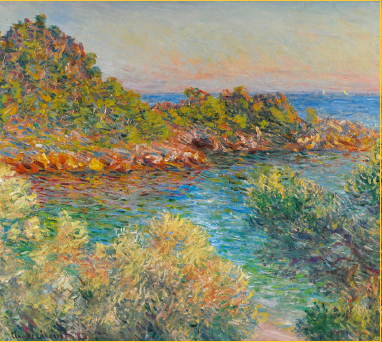My Kid Could Paint That
Text 1:
Kazuo Shiraga is an artist from the Gutai Art Group which emerged in Japan after World War II. He doesn’t paint in the traditional way, with a paintbrush. Instead, he creates his paintings using his hands and feet. He wants to communicate the idea of movement and action in his art. Leonardo Da Vinci painted one of his most famous paintings, Mona Lisa in the early 1500s. It shows the image of a young woman. The portrait was of Lisa Gheradini, the wife of a successful Italian businessman. People like the painting because it’s very realistic. It shows exactly what she looked like. The painting is most famous for Mona Lisa’s smile. From any viewpoint – standing in front of the painting or to the side – it looks like Mona Lisa is smiling at you. In the mid-1800s, Claude Monet helped develop a new style of painting called impressionism. Monet is famous for his outdoor scenes of lakes and the ocean. He also painted pictures of common objects, such as fruit and flowers. Other painters in this category included Pierre-Auguste Renoir, Edgar Degas, and Mary Cassat. Impressionist painters didn’t mix colours together. Instead, they made small dots of pure colour.
Text 2:
My Kid Could Paint That Does Marla Olmstead's work belong in a museum or on the fridge? Marla Olmstead made her first abstract painting while still in diapers, crouching on her parents' dining-room table. She was not yet 2. Her big break came when she was 3, and a family friend hung her paintings in a coffee shop in her hometown of Binghamton, N.Y. By the time she was 4, she was scarfing down cookies at the packed opening of her first solo gallery show. A local reporter covered the story, and the New York Times picked it up. Soon, reporters from all over were rushing to report on the adorable blond moppet and her colourful canvases, calling her a "budding Picasso," a "pint-sized Pollock." Within a few months, she sold more than $300,000 worth of paintings. And then, just short of her 5th birthday, the bubble burst. In February 2005, 60 Minutes aired a report by Charlie Rose implying that Marla's father, a night-shift manager at a Frito-Lay plant and an amateur painter himself, was guiding her compositions. Sales of the paintings quickly dried up, the family was sent hate e-mails, and the New York Post reported that the juvenile Pollock was nothing but pure fraud.

